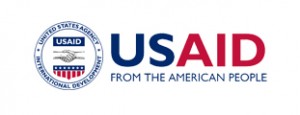The Administrator of USAID spoke yesterday at an event hosted by the Center for Global Development. For those unable to venture to Washington or to gain  access to the event, it was streamed live on the new USAID website celebrating 50 years for the agency (http://50.usaid.gov). This new site highlights the achievements of the last 50 years and outlines plans for the future work of USAID.
access to the event, it was streamed live on the new USAID website celebrating 50 years for the agency (http://50.usaid.gov). This new site highlights the achievements of the last 50 years and outlines plans for the future work of USAID.
Dr. Rajiv Shah has been leading the agency for just over a year and is working diligently to change the way that development works within USAID. With a focus on measurable outcomes and local empowerment, he wants to eliminate strategies that produce what Dambisa Moyo calls Dead Aid. He also wants the agency to run more cost effectively and shortly after entering his position eliminated costly senior positions in high priced cities such as Rome, Paris, Tokyo and Madrid.
Dr. Shah’s comments were right in line with our thoughts, on the need for strategies within development or charity to be extremely effective and connected with local efforts. His push for USAID to use more local agents and entrepreneurs in areas where they are providing development assistance creates long-term sustainable impacts and more overall effectiveness. For instance, in their food aid division, in 5 out of 20 focus countries, they are promoting and using the local agricultural sector to support the program. This includes partnering with local (mostly female) farmers in areas where they are trying to provide food support. This strategy creates a sustainable impact and in his eyes, decreases the food riots and failed states that are often associated with aid efforts.
He also is pushing for increased monitoring and policies that allow for only proven methods of change to continue. The agencies new evaluation policy requires third party evaluations of all strategies. They will collect baseline data along with measuring the outcomes of the USAID intervention. Final reports will provide a hypothesis of what would have happened had there been no intervention along with the outcomes from the USAID intervention, allowing a comparison of the level of impact from USAID efforts. These reports (whether showing positive or negative results) will be released within 3 months of completion of the evaluation. This will decrease the ability of contractors to delay and prolong their initiatives, use high priced ineffective strategies and for efforts that are not creating substantial change to be modified to increase their impact. It is the hope that the increased monitoring of their partners will eliminate the waste and the feelings that longstanding initiatives must continue because too much has been invested or they are too big too fail.
As we stated earlier this week in our post on band-aid approaches, most organizations focused on bringing about social change should be working towards eliminating the need for their existence. Dr. Shah stated that USAID is not focused on the maintenance or growth of the agency and instead wants to increase strategies that lead to the decreased need of USAID support. They have a goal of graduating 7 countries from their services by 2015 and their focus on sustainable economic growth and cost effective strategies seems like a strong step in the right direction. He wants the American taxpayer to know that their tax dollars are going towards smart strategies. This benefit is not only for the taxpayers, but also for those on the receiving end of services. Smarter strategies will produce more change and increase the long-term impact of communities in need.



1 pings